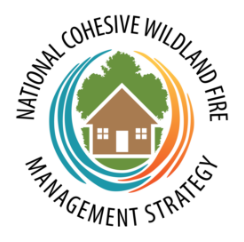Financial Assistance Opportunities
- FEMA Grants FEMA has 3 grant programs that can fund WUI/wildfire mitigation projects and activities – the Pre-Disaster Mitigation (PDM) grant, the Hazard Mitigation Grant Program (HMGP), and the Assistance to Firefighters Grant (AFG)/Fire Prevention & Safety (FP&S) grants.
- Community Planning Assistance for Wildfire (CPAW) Working with communities to reduce wildfire risks through improved land use planning.
National Information Sources
- Multihazard Planning Framework for Communities in the Wildland-Urban Interface The Multihazard Planning Framework for Communities in the Wildland-Urban Interface lays out a comprehensive framework that:
- addresses risk from wildfire and other hazards
- encompasses scales from site to neighborhood, community, and region
- identifies a range of planning interventions that can be used to reduce risk and maximize the benefits that forests provide across the scales of concern
It includes a planning systems audit tool, which can be used by regions and the communities within them to identify strengths, gaps, and potential areas for improvement in the jurisdiction’s planning system (plans, codes, and public investment and other programs) as they relate to multi-hazard risk.
- Wildland Urban Interface Wildfire Mitigation Desk Reference Guide Designed to provide basic background information on relevant programs and terminology for those, whether community members or agency personnel, who are seeking to enhance their community’s wildfire mitigation efforts.
- Ready, Set, Go!® program The RSG! Program tenets help residents be Ready with preparedness understanding, be Set with situational awareness when fire threatens, and to Go, acting early when a fire starts.
- Wildfire Home Assessment Program & Checklist The Wildland Fire Assessment Program (WFAP) is a joint effort by the U.S. Forest Service and the National Volunteer Fire Council (NVFC) to provide volunteer firefighters and non-operational personnel, such as Fire Corps members, with training on how to properly conduct assessments for homes located in the wildland-urban interface (WUI).
- Firewise USA™ Program Firewise USA™ is a key component of Fire Adapted Communities – a collaborative approach that connects all those who play a role in wildfire education, planning and action with comprehensive resources to help reduce risk. Firewise USA™ is a program of the National Fire Protection Association.
- NFPA/IBHS Research Fact Sheets The fact sheets cover the following topics: coatings, fencing, decks, attic and crawl space vents, and roofing materials.
- International Code Council’s International Wildland Urban Interface Code (IWUIC)
- National Fire Protection Association’s Standard for Reducing Structure Ignition Hazards from Wildland Fire (Standard 1144)
- FEMA Local Mitigation Planning Handbook The Local Mitigation Planning Handbook (Handbook) is the official guide for local governments to develop, update and implement local mitigation plans. It also offers practical approaches, tools, worksheets and local mitigation planning examples for how communities can engage in effective planning to reduce long-term risk from natural hazards and disasters.
- Fire Adapted Communities Learning Network Works with communities across the nation to create a more wildfire-resilient future. A “fire adapted community” consists of informed and prepared citizens collaboratively planning and taking action to safely co-exist with wildland fire.
- Community Planning Assistance for Wildfire (CPAW) Working with communities to reduce wildfire risks through improved land use planning.
- US Fire Administration/National Training Center The U.S. Fire Administration (USFA) and National Fire Academy (NFA) are working to advance the professional status and expand the knowledge and skills of fire and emergency services personnel. Their free training and education programs support fire departments and emergency services organizations in preparing for, preventing and responding to fires and other hazards.
State and Regional Information Sources
- New Jersey Fire Safety Council The NJFSC’s goal is to protect the people and property of New Jersey from the effects of catastrophic wildfires through education, awareness, innovation and action.
- Firewise USA™ Communities List Current list of all communities in the US that are recognized as a Firewise USA™ Community by the National Fire Protection Association (NFPA).
Partner & State Contact Directory
Federal Wildland Fire Management websites
- National Cohesive Wildland Fire Management Strategy – Northeast Region
- Fire Management in the Northeast (US Fish & Wildlife Service brochure)
- Northeastern Area State & Private Forestry – Fire and Aviation Management
- US Forest Service, Eastern Region Fire & Aviation
- National Park Service – Wildland Fire
- US Fire Administration
- FEMA/U.S. Fire Administration – Wildland Urban Interface (WUI) toolkit
State Forest Fire Management websites
- Connecticut Division of Forestry – Forest Fire Prevention and Control
- Delaware Forest Service, Forest Protection
- Illinois Department of Natural Resources, Wildland Fire Program
- Indiana Department of Natural Resources, Fire Management Program
- Iowa Department of Natural Resources Rural Fire Protection and Fire Prevention Programs
- Maine Forest Service, Forest Protection
- Maryland Department of Natural Resources, Firewise Living in Maryland
- Massachusetts Department of Conservation and Recreation’s Bureau of Forest Fire Control
- Michigan Department of Natural Resources, Fire Management
- Minnesota Department of Natural Resources, Fire Management
- Missouri Department of Conservation, Fire
- New Hampshire Division of Forests and Lands, Forest Protection Bureau
- New Jersey Department of Environmental Protection, Forest Fire Service
- New York Department of Environmental Conservation, Wildfires
- Ohio Department of Natural Resources Fire Management
- Pennsylvania DCNR Bureau of Forestry, Wildland Fire
- Rhode Island Department of Environmental Management, Forest Environment Program
- Vermont Dept. of Forests, Parks and Recreation, Agency of Natural Resources
- West Virginia Division of Forestry, Wildfire Prevention and Control
- Wisconsin Department of Natural Resources, Forest Fire Protection
Forest Fire Compacts websites
State forest fire programs are reinforced through forest fire compacts between the states. Established under the Weeks law and other specific legislation enacted by Congress, state forest fire compacts reduce wildfire suppression costs for local, state and Federal jurisdictions by allowing states to share personnel and equipment and by minimizing the firefighting burden on any single state during periods of high fire occurrence.
Prescribed Fire Councils websites
The purpose of a Prescribed Fire Council is to promote the exchange of information, techniques, and experiences of the prescribed fire community, and to promote public understanding of the importance and benefits of prescribed fire.
Fire Science Resources
National
- National Joint Fire Science Program A Department of the Interior program designed to fund and communicate wildland fire research. Provides syntheses of large research projects on subjects such as smoke science, fuel treatment effects, and landscape resilience.
- Fire, Fuel, and Smoke Science Lab A USDA Forest Service lab focused on developing management and modeling applications for fire spread, smoke, and fuel management.
- Wildland-Urban Interface Fire Group A division of the National Institutes of Standards and Technology focuses on ember and firebrand spread from wildland fires into communities.
- WUI Home Ignition Research A list of home ignition research sites including building materials research and flame radiation ignition probabilities.
Regional
- Wildfire Management in Wildland-Urban Interface Areas: Northern Research Station Research into existing and future housing areas at risk of wildland fire.
- Fire Research Program: Northern Research Station An overview of fire physical fire science, fire ecology, social fire science, and outreach efforts of the USDA Forest Service’s Northern Research Station.
- Eastern Forest Environmental Threat Assessment Center A USDA Forest Service research office focusing on numerous projects including fire and water quality, landscape scale assessments, and ecosystem services.
- Consortium of Appalachian Fire Managers and Scientists The focus of the exchange (or Consortium) network is to communicate new and existing science to land managers in meaningful ways. Exchanges also work to gather information from managers on what kind of wildland fire research is needed in each region.
- North Atlantic Fire Science Exchange A science exchange of the Atlantic states from Delaware to Maine.
- Lake States Fire Science Consortium A science exchange in states surrounding the Great Lakes.
- Tallgrass Prairie & Oak Savanna Fire Science Consortium A science exchange running from Minnesota to western Ohio.
- Oak Woodlands & Forests Fire Consortium A science exchange covering Texas northeast to Kentucky, including southern Missouri, Illinois, and Indiana.

